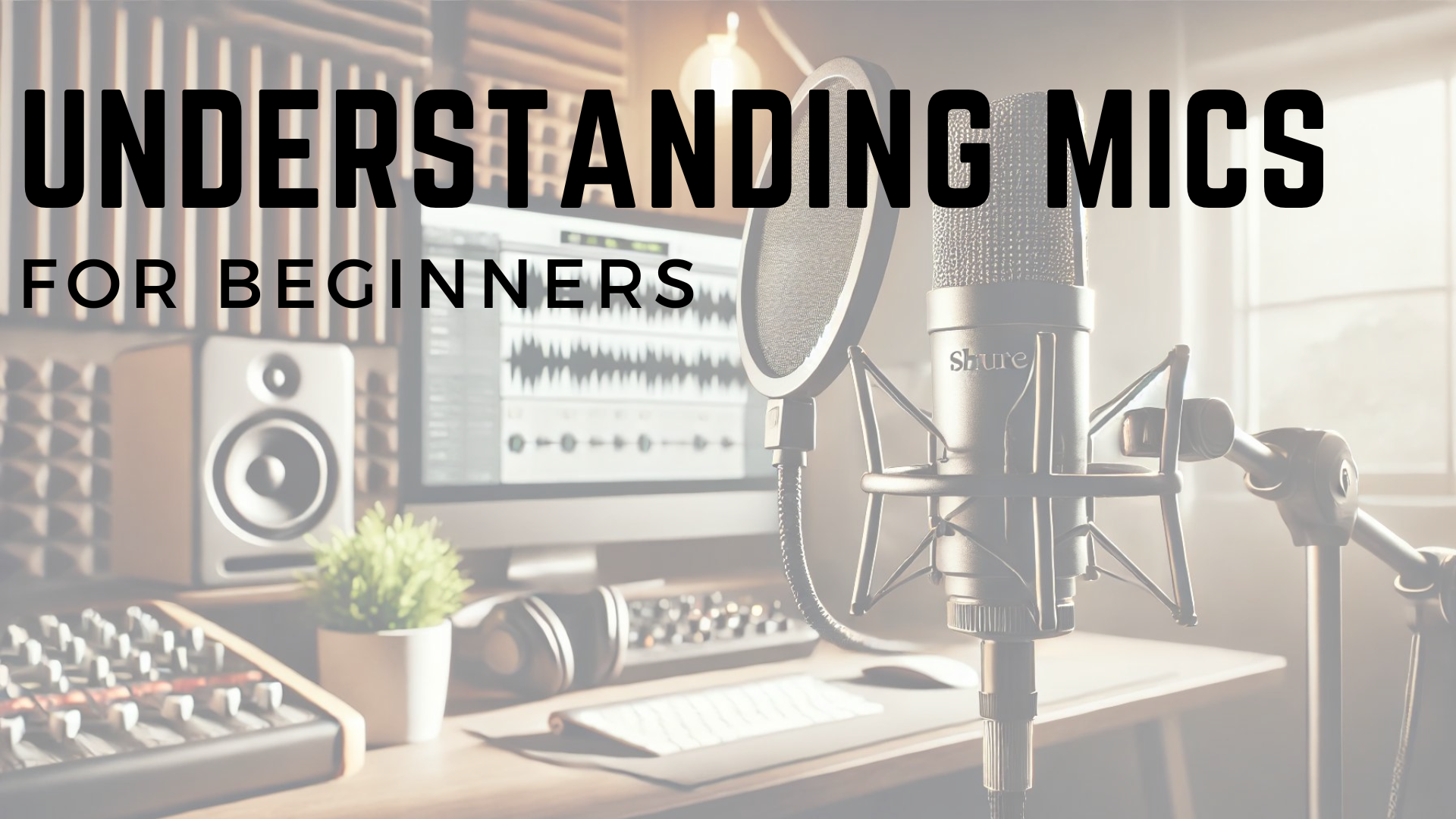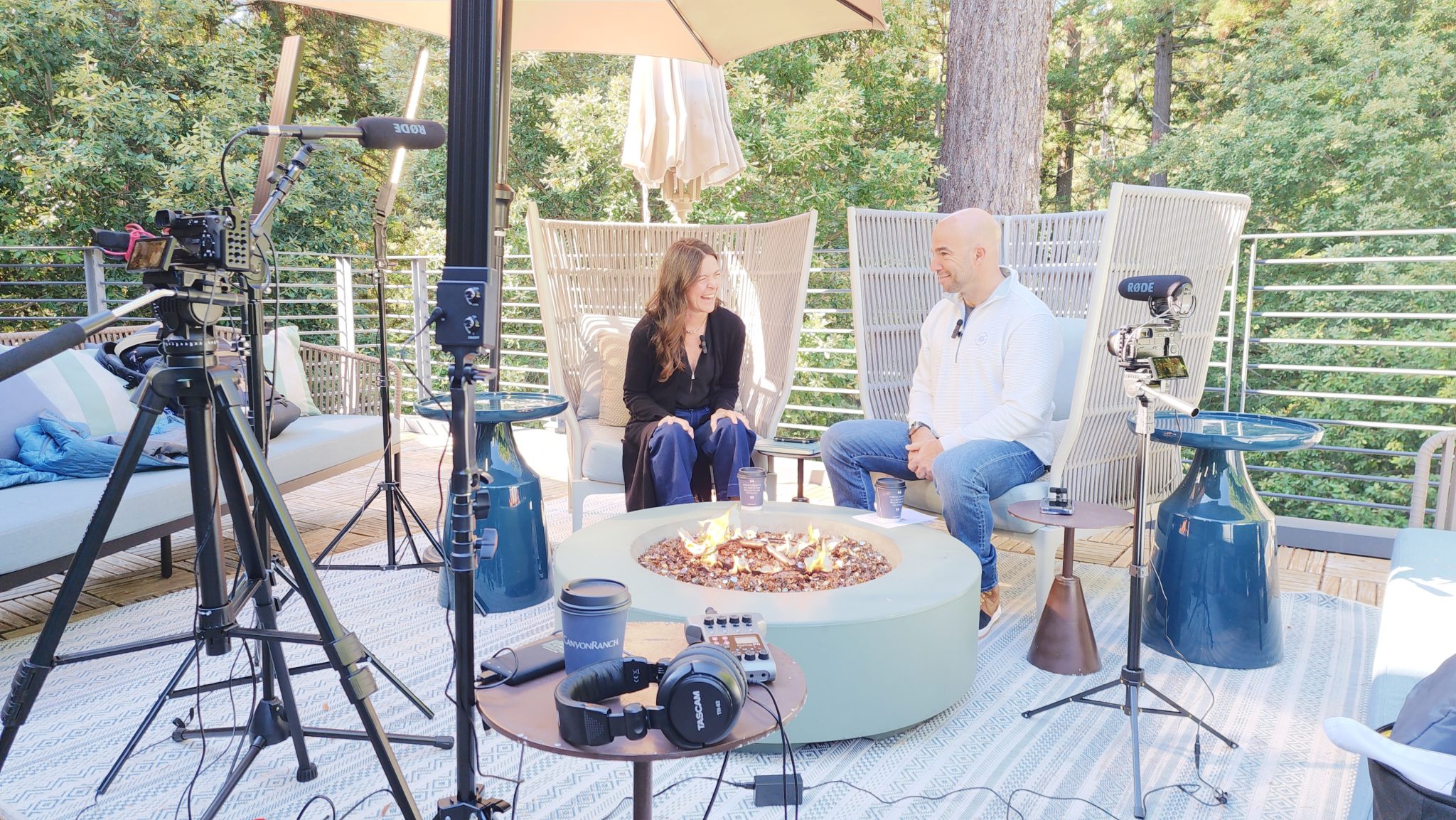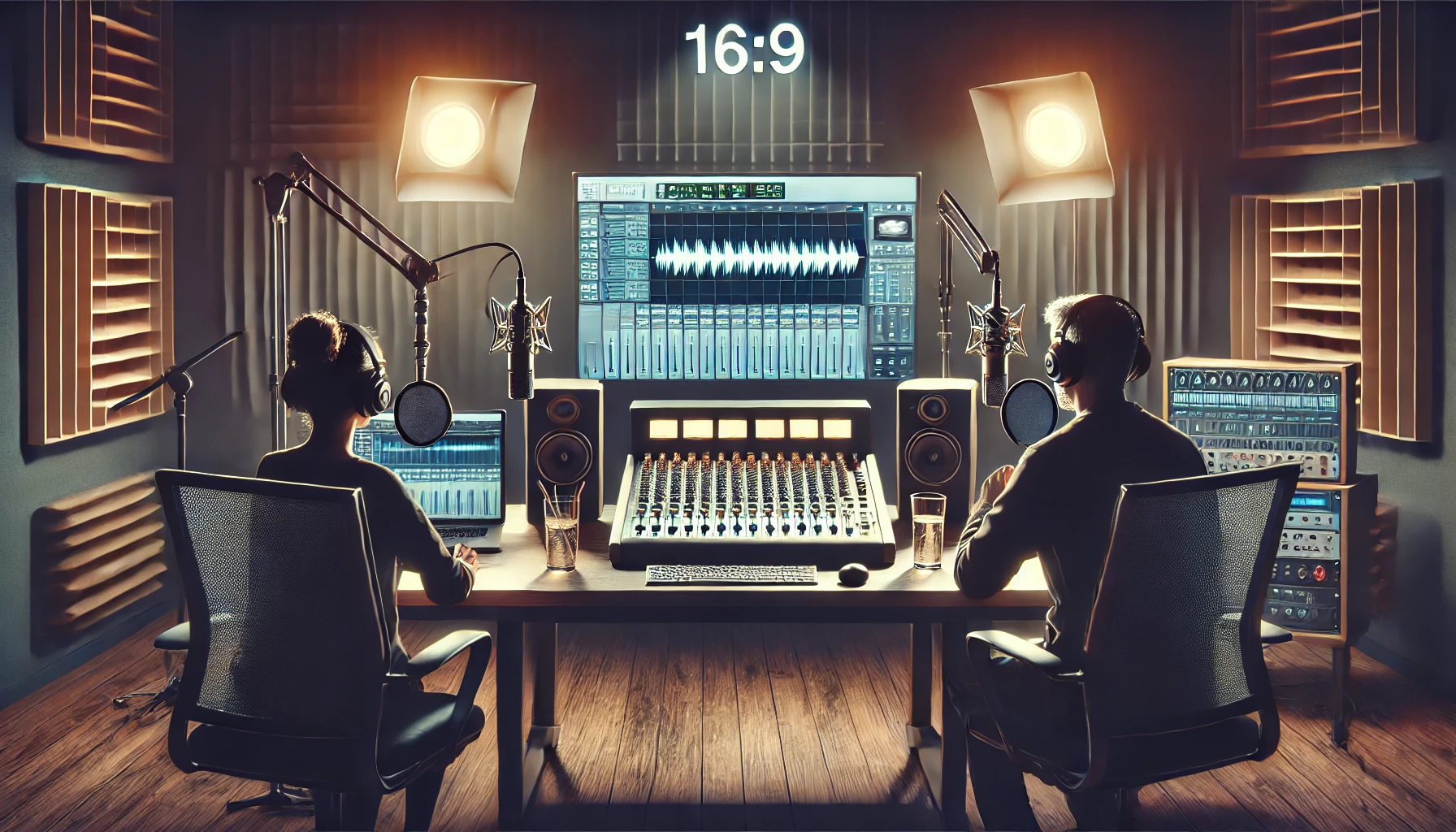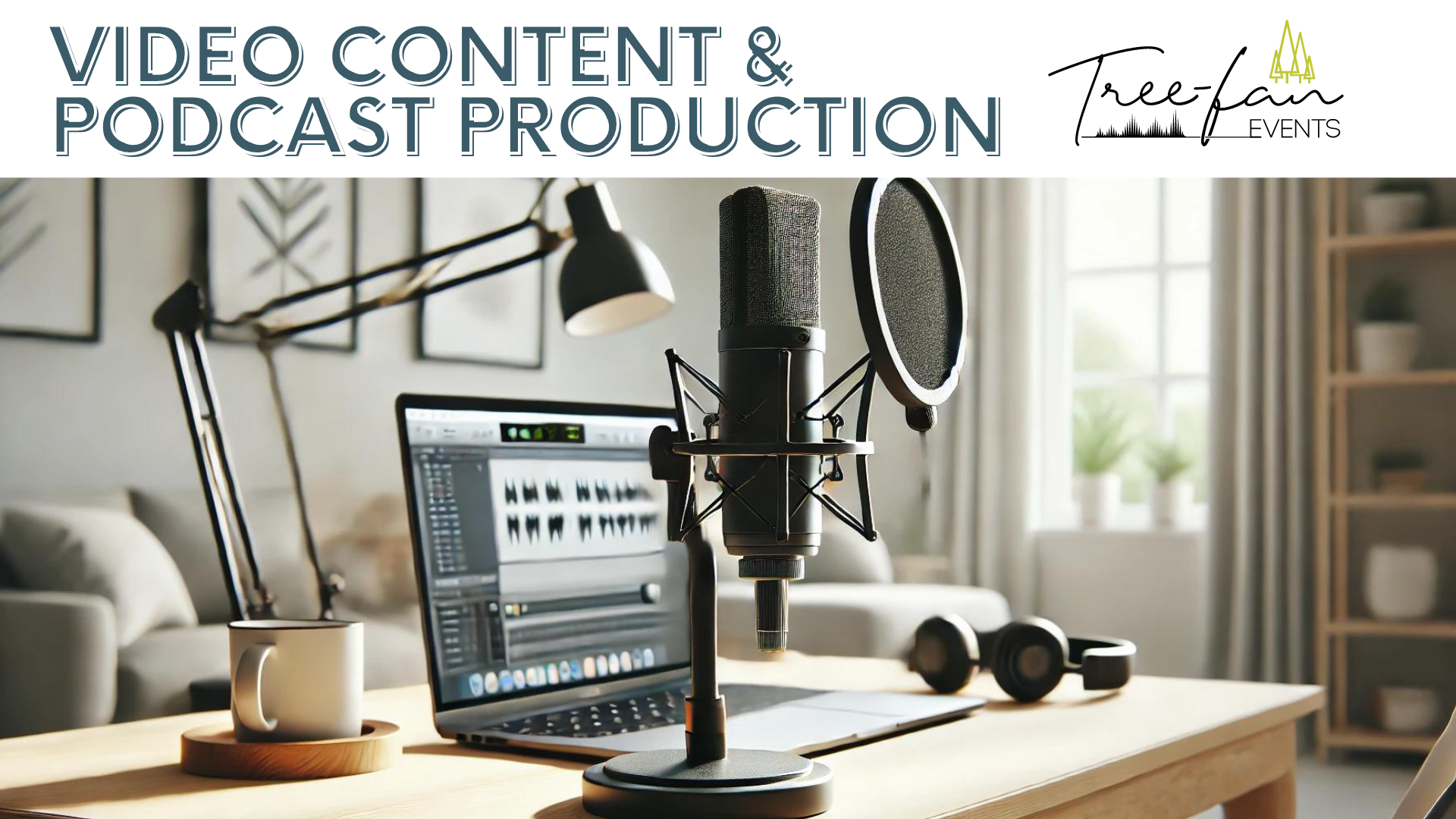Microphones are a fundamental tool in the world of audio, transforming sound waves into electrical signals. They are essential in various fields, including music production, broadcasting, live events, and podcasting. Understanding the different types of microphones and their specific uses can significantly enhance the quality of your audio projects. In this post we will talk about types of microphones as well as the best microphones for podcasting.

Types of Microphones
1. Dynamic Microphones
– How They Work: Dynamic microphones use a simple design with a diaphragm attached to a coil of wire, placed within a magnetic field. When sound waves hit the diaphragm, it moves the coil, generating an electrical signal.
– Pros: These mics are rugged, durable, and capable of handling high sound pressure levels (SPL), making them ideal for loud environments like live performances and stage events. They don’t require an external power source, which adds to their convenience.
– Cons: While they are durable, dynamic mics are less sensitive than other types, which means they might not capture the fine details of softer sounds.
2. Condenser Microphones
– How They Work: Condenser microphones use a capacitor (condenser) to convert sound into an electrical signal. The diaphragm is much lighter than in dynamic microphones, which allows it to pick up more subtle sound waves.
– Pros: They are highly sensitive and capture a wide range of frequencies and sound details, making them ideal for studio recordings, vocals, and acoustic instruments.
– Cons: Condenser mics require an external power source, known as phantom power, and are more delicate, making them less suitable for rough handling or high-volume environments.
3. Ribbon Microphones
– How They Work: Ribbon microphones use a thin metal ribbon placed within a magnetic field. Sound waves cause the ribbon to vibrate, generating an electrical signal.
– Pros: These microphones are known for their smooth, natural sound and are excellent for capturing high-frequency detail. They are often used in studio settings for instruments and vocals.
– Cons: Ribbon mics are fragile and can be damaged by high SPLs, making them less versatile for live sound or loud environments.
Microphones for Specific Uses
– Live Performances: Dynamic microphones are typically the go-to choice for live performances due to their durability and ability to handle loud sound sources without distortion. Examples include the Shure SM58 and the Sennheiser e935.
– Studio Recording: Condenser microphones are preferred for studio environments where capturing detail is paramount. They excel in controlled settings where the nuances of sound can be preserved. Popular models include the Neumann U87 and the Audio-Technica AT2020.
– Broadcasting: Ribbon microphones, like the Royer R-121, are often used in broadcasting and studio recording for their warm, natural sound, though dynamic mics like the Electro-Voice RE20 are also a popular choice for their robustness.
Microphones for Podcasting
Podcasting is a unique medium that combines elements of broadcasting and studio recording. The choice of microphone can significantly affect the quality of your podcast, making it essential to choose the right one based on your environment and the type of sound you want to achieve.
1. Dynamic Microphones for Podcasting
– Shure SM7B: The Shure SM7B is a dynamic microphone that has become a gold standard in podcasting. Known for its rich, warm sound, it excels at isolating the speaker’s voice while minimizing background noise. This makes it ideal for untreated or less controlled environments. It’s versatile and can handle everything from soft speech to loud voices without distortion.
– Electro-Voice RE20: Another popular choice among podcasters, the RE20 is a dynamic microphone known for its consistent sound across different vocal ranges. Its Variable-D design minimizes proximity effect (the increase in bass as you get closer to the mic), making it easier to maintain a consistent sound.
2. Condenser Microphones for Podcasting
– Rode NT1-A: The Rode NT1-A is a condenser microphone that offers an incredibly low self-noise level, making it perfect for capturing the finer details of your voice. It’s great for podcasters who have a well-treated recording space and want a clean, clear sound.
– Blue Yeti: The Blue Yeti is a versatile, user-friendly condenser microphone that’s particularly popular with beginners. It offers multiple pickup patterns, allowing you to choose the best one for solo recordings, interviews, or group discussions.
3. USB Microphones for Podcasting
– Audio-Technica ATR2100x-USB: The ATR2100x-USB is a dynamic microphone that offers both USB and XLR outputs, making it a great option for podcasters who want flexibility. It’s easy to use, durable, and delivers a professional sound quality at an affordable price.
– Samson Q2U: Similar to the ATR2100x-USB, the Samson Q2U is a hybrid microphone that provides both USB and XLR connections. It’s ideal for podcasters who are starting out but want the option to upgrade their setup over time.
Choosing the Right Microphone for Your Podcast
When selecting a microphone for podcasting, consider the following factors:
– Recording Environment: If you’re recording in an untreated room with potential background noise, a dynamic microphone like the Shure SM7B is likely your best bet. Its ability to reject off-axis noise makes it ideal for less-than-perfect environments.
– Vocal Characteristics: Consider the tone of your voice. Some mics, like the Shure SM7B, enhance lower frequencies, giving a warmer sound, which might be more flattering for certain voices.
– Budget: While higher-end microphones can offer superior sound quality, there are plenty of affordable options like the Audio-Technica ATR2100x-USB that deliver excellent performance without breaking the bank.
– Portability: If you need to record on the go, consider a USB microphone that’s easy to set up and doesn’t require an audio interface.
Microphones are a crucial element in the audio production chain, and choosing the right one can elevate your podcast’s quality significantly. Whether you opt for a dynamic microphone like the Shure SM7B for its durability and excellent sound isolation, or a condenser microphone like the Rode NT1-A for its clarity and detail, understanding your needs and environment will guide you to the best choice. With the right microphone, your podcast can achieve professional-level sound, engaging your audience with every word.

Are you overwhelmed with the tedious work of producing and editing your podcast or video content?
Let us take that burden off your shoulders. With years of experience in producing podcast shows, both in-person and virtually, we offer a range of services designed to help you reclaim your time and focus on what you love—growing your business.
Our Podcast Management Services include everything from a New Podcast Launch Consultation Call to Technical Consultation with the best podcast equipment suggestions. We can handle all aspects of production, including Podcast Cover Creation, Intro/Outro Audio Recording, and even Royalty-Free Original Music Production by our partner, FableScore.
Whether you need intros, outros, bumpers, advertisement segments, sound effects, background music, or video transitions, we’ve got you covered. We’ll also take care of normalizing, compressing, and equalizing your audio, removing long pauses and filler words, and mastering the final product for professional quality. Once completed, we’ll upload your polished episode directly to your preferred platform or share it with you for review.
Looking for something extra? We offer Promo Video Cuts with Subtitles, Transcription, Timestamps, and Show Notes to enhance your podcast’s reach and engagement.
Let us handle the production so you can focus on creating great content and growing your audience. Get in touch with us today to learn more about how we can elevate your podcast to the next level!




